The city of Hiroshima in Japan is known for all the wrong reasons.
People don’t remember that it was once a quaint fishing village nestled on the shores of Hiroshima Bay, nor do they recall stories of its success as a trading centre during the 1500s.
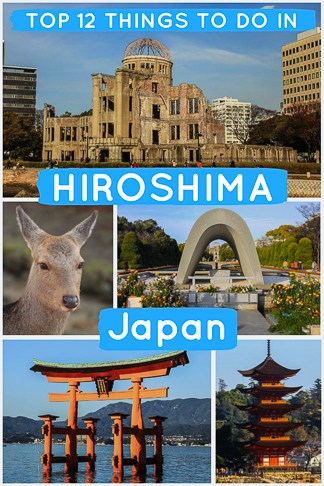
Top 12 Things to Do in Hiroshima, Japan
When you mention Hiroshima these days, most people instantly remember that on August 6th, 1945, this peaceful Japanese city was decimated by an atomic bomb with the loss of many lives.
The city’s destruction didn’t end there either.
Later in the same year, Hiroshima was struck by a typhoon which took down many of its remaining bridges and railroads.
You would think the citizens of Hiroshima would give up, but they didn’t.
Instead, they showed resilience, courage and strength, striving to rebuild the city they once knew.
Instead of constructing skyscrapers filled with profitable businesses which would refuel their economy, they built memorial parks and left poignant ruined landmarks as a stark reminder that such an atrocity can never happen again.
Today you can visit these landmarks, which include Hiroshima Peace Memorial Park, Atomic Dome and Hiroshima Peace Memorial Museum.
You can see the city from Hiroshima Castle, take a boat ride or visit a local temple.
This city was on its knees, but today it’s a serene space in Japan, a place where the past is never forgotten, but citizens embrace the present and look to a brighter future.
Top 12 Things To Do In Hiroshima
Walk Through Hiroshima’s Peace Memorial Park
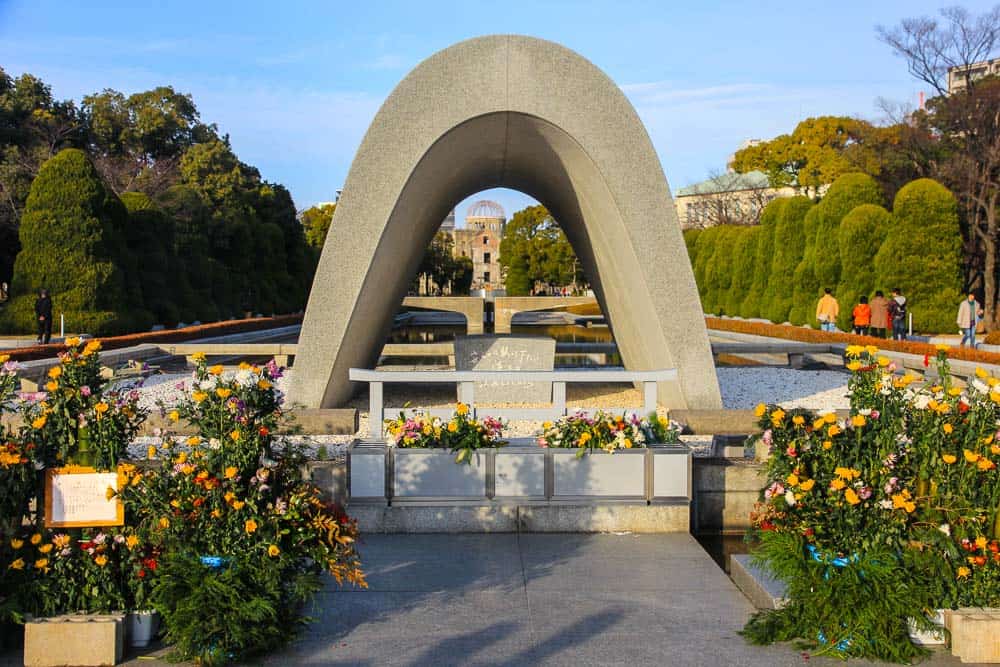
Hiroshima’s Peace Memorial Park
This tranquil 120,000 square metre park sits in an area which was once known as Nakajima – the commercial hub of the city.
When the Americans unleashed the atomic bomb on the city in 1945, the area was completed destroyed.
Four years later in 1949, the city, attempting to recover, decided to convert the area into a park of remembrance dedicated to those who perished.
Today, it features walking paths, trees and sculpted gardens with memorials where people can reflect and pay their respects to those lost.
Additionally, every year on August 6th a memorial ceremony is held here, and 10,000 lanterns are set to sail along the river holding prayers of peace.
View Ruins of the Atomic Dome
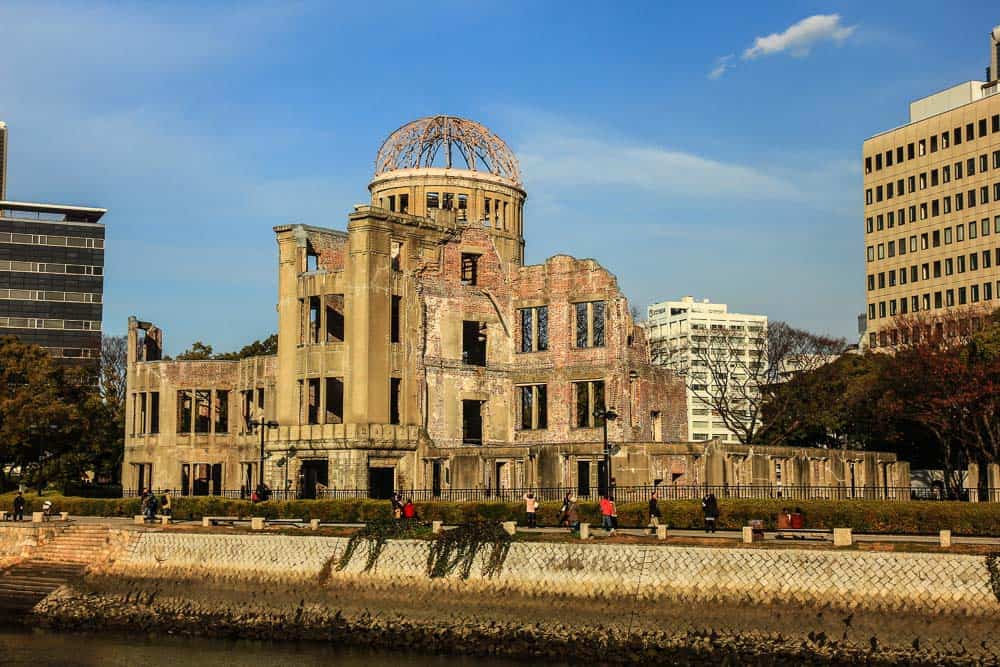
The Atomic Dome
The Atomic Dome or A-Dome is located in Peace Memorial Park.
The domed building was originally built in 1915 by Jan Letzel, a Czech architect.
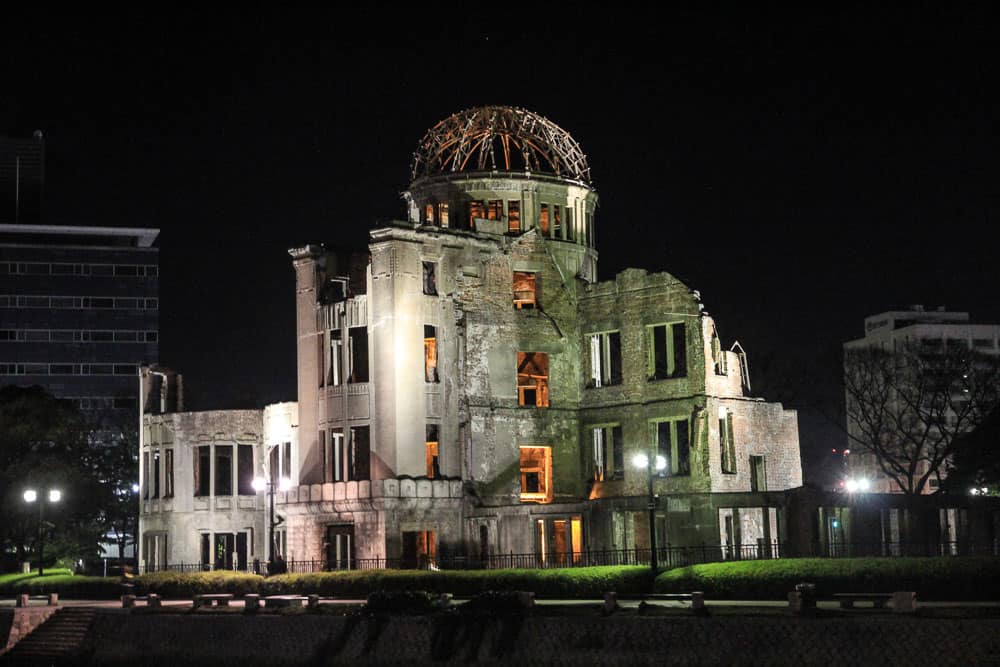
The Atomic Dome during the night
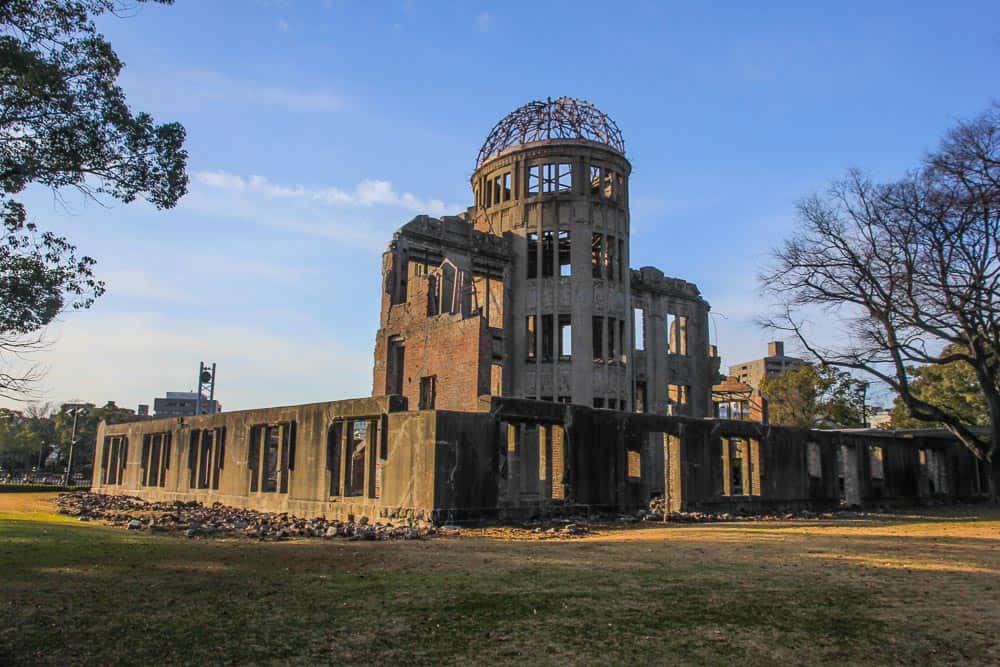
The Atomic Dome from the backside
It was known as the Prefectural Industrial Promotion Hall – constructed to promote the city’s commercial industries.
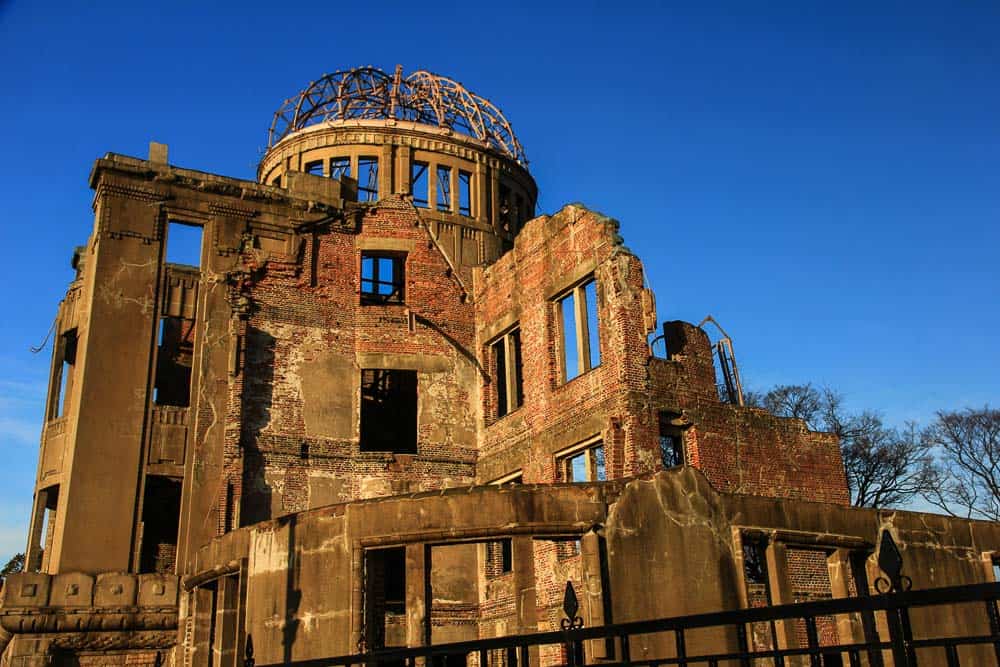
The Atomic Dome
It was one of the only buildings remaining after the atomic bomb blast and its ruins were kept by citizens as a solemn reminder of what took place on that fateful day in August 1945.
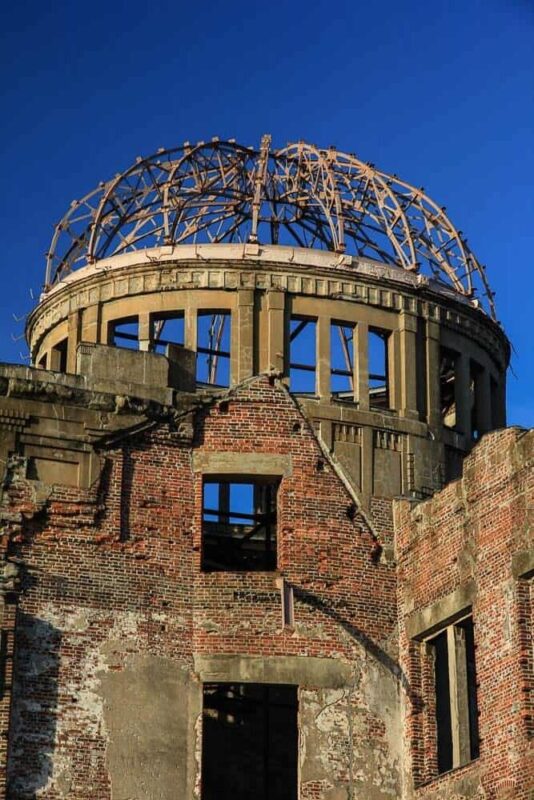
The Atomic Dome
Visit the Flame of Peace & Children’s Peace Monument
Whilst still in the park, visit the Flame of Peace which serves as a memorial to victims of the atomic bomb.
The sculpture represents two adjoined wrists and wings on either side facing the sky. The flame was lit in 1964 as still burns brightly today as a symbol of hope.
Citizens of the city say it will continue to burn at the memorial until the world fully abolishes the use of nuclear weapons.
Continue along the pathways to the poignant Children’s Peace Monument, constructed to commemorate all children who died.
The monument depicts a bronze statue of a girl lifting a paper crane above her head. It’s dedicated to Sadako Sasaki, a young girl who passed away from leukaemia caused by radiation exposure from the bomb blast.
Discover Exhibits at Peace Memorial Museum
This museum is also located within the Peace Park and is a most-visited attraction in Hiroshima.
The museum opened its doors in 1955 – 10 years after the bombing to provide detailed explanations and exhibits about the tragedy.
You can see artefacts, photographs of the city before and after, and exhibits which demonstrate the long-lasting effects of such an act.
If you are interested in learning more about the events and how to prevent such an atrocity from happening again, this is the place to visit.
Delve into History at Hiroshima Castle
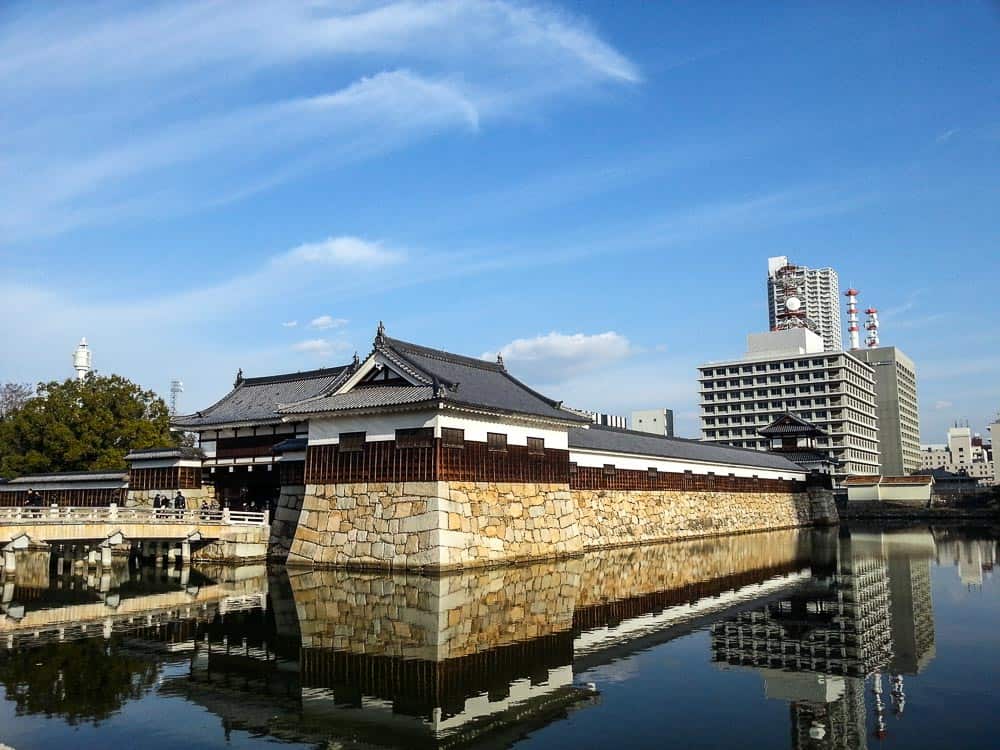
The wall outside the Hiroshima Castle
The castle, like much of the city, was destroyed by the atomic bomb in 1945.
However, it has since been rebuilt close to its original form in tiered pagoda design with an interior museum housing Japanese art and artefacts.
The castle is elevated on a plain overlooking the city, standing five storey’s high surrounded by a moat.
Centuries ago, it was a powerful government seat in western Japan, and today the views will not have altered much, as during springtime cherry blossom trees bloom in a sea of pink, covering the landscape for as far as the eye can see.
Take a Boat Ride in Hiroshima
Hiroshima was originally a trading city built on waterways, and although most of the trade has diminished, the canals and rivers still exist.
They offer a great way to see the city from a different perspective too.
On these tours, see Hiroshima Castle, the Atomic Bomb Dome and Peace Memorial Park or cruise further to Miyajima Island and its holy shrines.
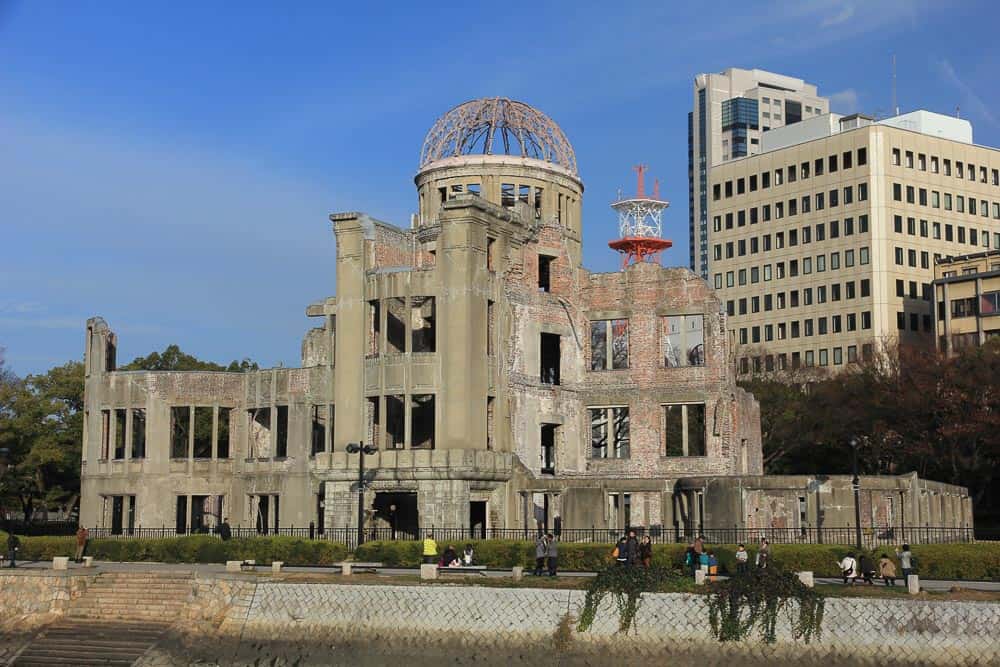
The Atomic Dome from the river
Most city boat tours only take an hour, so if you start early, you will have plenty of time to explore your chosen highlights during the rest of your day.
Visit the Shukkei-en Sunken Gardens.
This traditional Japanese sunken garden in downtown Hiroshima dates to the early 1600s when it was built for a samurai.
With pathways which meander around the lakes, herb gardens and orchards which contain maple and ginkgo trees, it’s a place in which to relax, contemplate and embrace nature.
Ornamental bridges span the koi and turtle filled ponds; there are a classical tea house and ancient medicinal plant gardens flanked by bamboos.
During autumn months when the leaves turn to copper and red, it’s a must-visit attraction in Hiroshima, and at any other time of year, it’s a beautiful, tranquil haven where you can unwind in the heart of the city.
Take in the Mazda Museum
If you love all things automotive, make a pit stop at the Mazda Museum.
As this is the corporate HQ for the car manufacturer, you can actually see the assembly line at work and learn how a car is constructed from start to finish.
Guided tours are available, taking you through the company’s history, teaching you about their design and technological processes whilst still allowing time to browse Mazda merchandise in the gift shop!
Sample Local Cuisine
One of the best things about a trip to Japan is sampling the local food.
Each region has its own delicacies, and in Hiroshima, this is no different.
Their most popular dish is okonomiyaki – a savoury pancake with cabbage, eggs, buckwheat noodles, mixed meats, vegetables or seafood.
A great place to try this dish is at Okonomimura, a kind of food emporium with 25 restaurants in one building! They serve cuisine traditional to the area, so you can sample all of Hiroshima’s culinary delights in one place!
Relax in the Hot Springs
When you’ve visited museums and parks of Hiroshima, why not spend a relaxing day at a hot spring spa resort?
You’ll find some ryokans offer day packages in Hiroshima and on Miyajima Island or you can try the favourite Miharashi Hot Spring with views over the Seto Inland Sea.
If you prefer to venture into the mountains for your hot spring retreat, there are options outside the city overlooking tranquil woodland where you can immerse yourself in nature whilst enjoying a leisurely soak.
Visit Miyajima Island (Itsukushima)
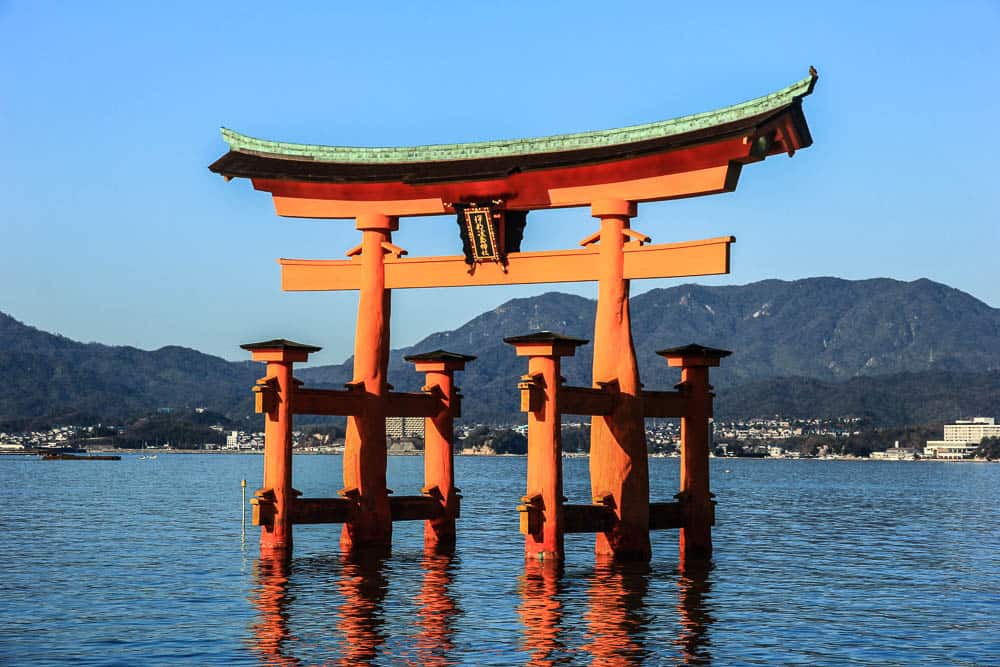
Itsukushima
Whilst officially known as Itsukushima, the island is often referred to as Miyajima or “Shrine Island” for its floating torii gates and ornate shrines built over the water.
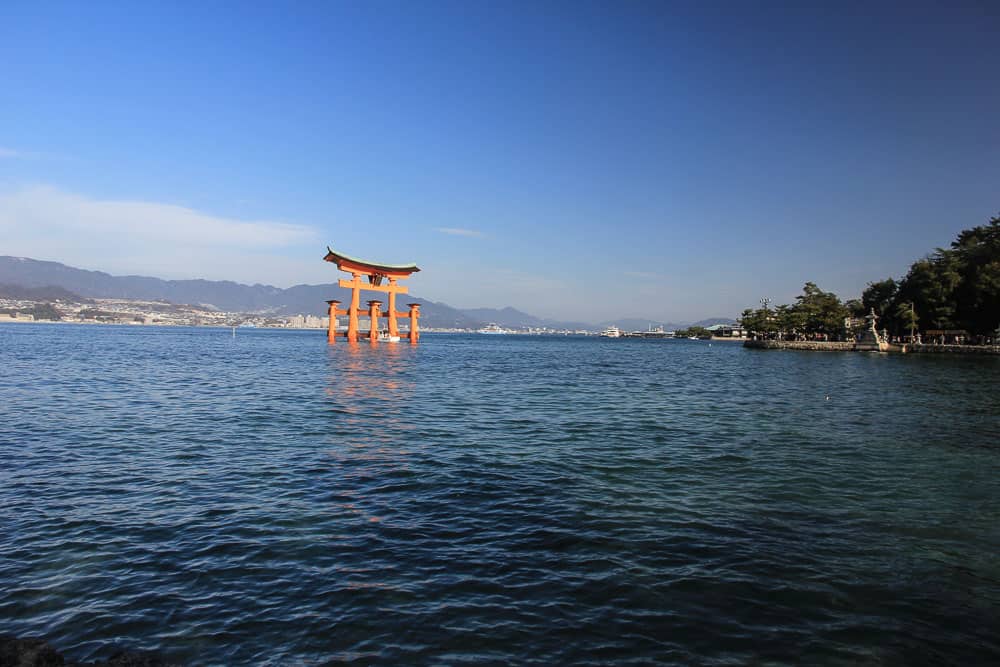
Itsukushima
The island has been rated as having one of the Top 3 views in all of Japan too, so don’t forget your camera!
Here, wild deer peacefully roam the same paths as tourists, and when the tide is low, you can walk to the vermillion red torii gates to see their intricate designs up close.
The island has a kind of inner peace about it, allowing you to fully relax and unwind, and if you stay after sunset when the tourists leave, the gates and shrines illuminate providing a picture-perfect backdrop to your Japan stay.
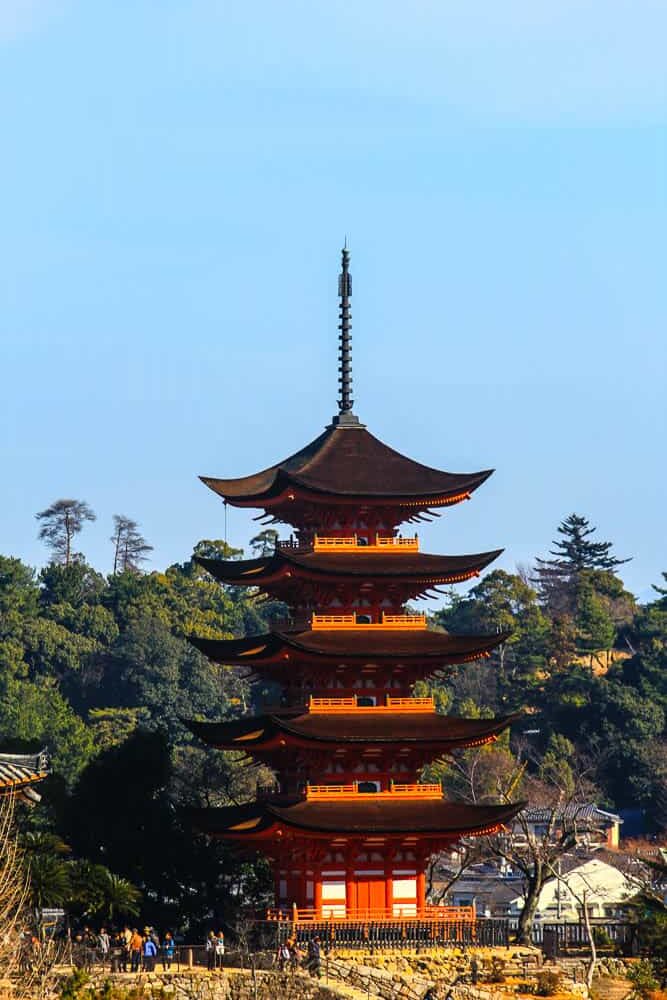
The Five-Story Pagoda on Miyajima
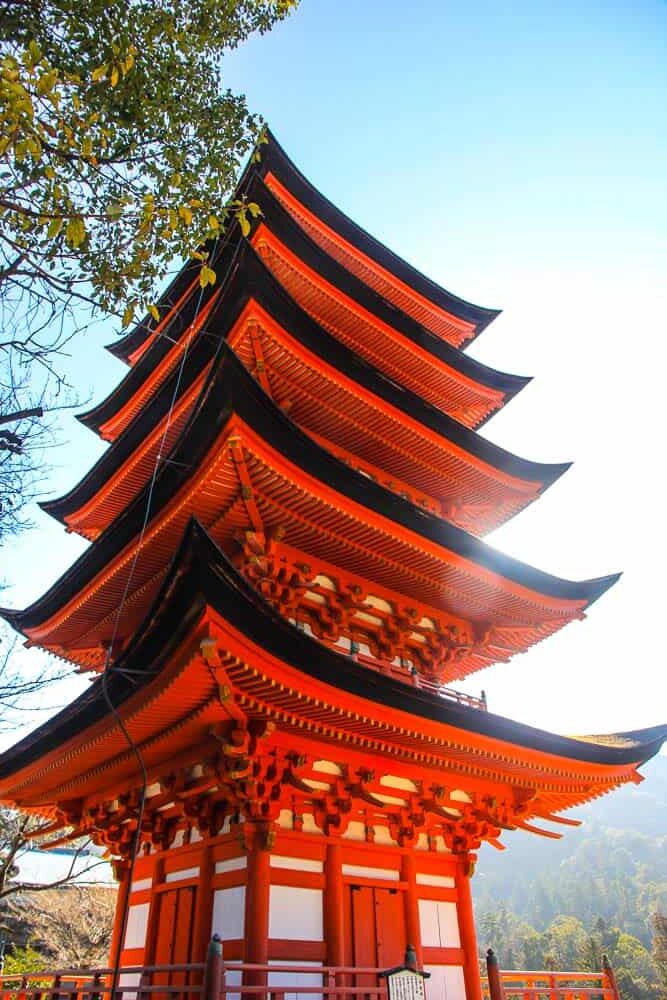
Five-Tiered Pagoda at Itsukushima Shrine
You can reach Miyajimaguchi ferry port for the island in under an hour from Hiroshima Station by train or via tram no. 2.
Alternatively, boats connect Hiroshima Peace Park with Miyajima every hour during the daytime – however, this is the most expensive option.
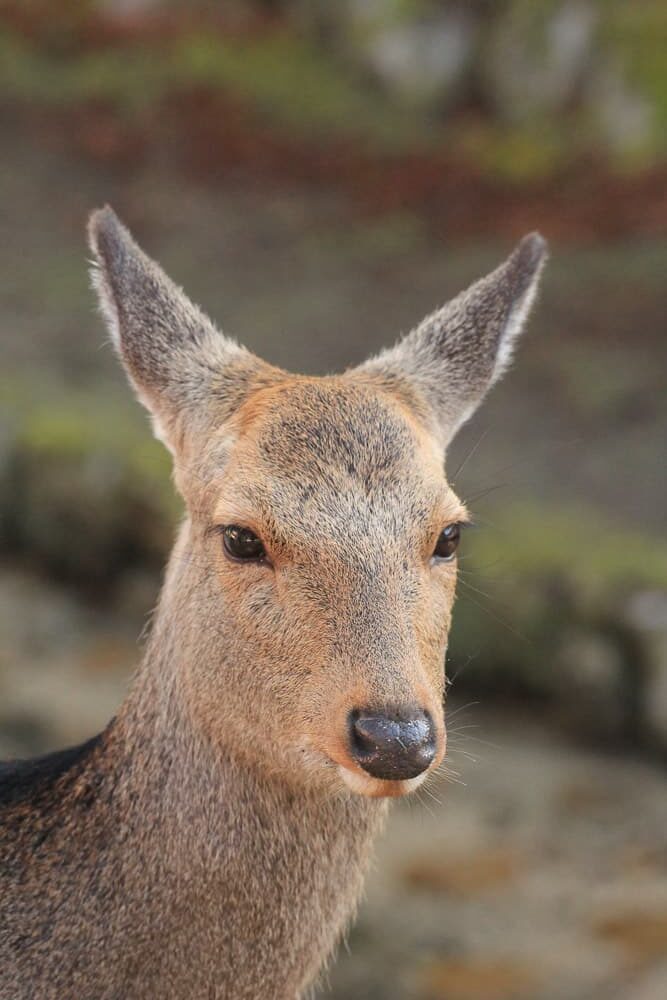
Miyajima Island is also famous for its tame deers.
Hike to the Summit of Mount Misen
Whilst visiting Miyajima Island, take some time to hike sacred Mount Misen. At the base of the mountain, stop at Daisho-in Temple with its caves and Buddha statues which are said to give blessings.
The Daisho-in course trail which begins at the temple continues for 2.3 kilometres and takes 90 minutes to reach the mountain summit.
There are, however, easier or more difficult trails depending on your fitness levels. Regardless of which one you decide to take, the views from the top are simply awe-inspiring.
You can gain clear views over the Seto Inland Sea and Hiroshima Bay and on clear days even see the city itself.
The great news is, if you walk up the mountain, you can catch a cable car back down to save your weary legs, plus the return journey offers a completely different perspective of the landscape.
How to Get to Hiroshima
Hiroshima is located in Japan’s southwest on Honshu Island, the largest island in Japan.
It’s possible to reach the city by bullet train – Shinkansen from Osaka, Kyoto and Okayama easily or you can travel by local trains which are slower but more economically priced.
If you wish to fly to Hiroshima, the city is 63 kilometres from its nearest airport Hiroshima Airport which operates international and domestic flights from South Korea, China, Taiwan, Hong Kong and Singapore.
There may not be direct flights from Europe to Hiroshima International at present, but you can fly to Kansai International Airport near Osaka and travel the rest of the journey by car or high-speed train (1 hour 20 minutes on the fastest train).
Alternatively travelling from Tokyo to Hiroshima Station only takes 3 hours 50 minutes on the Tokaido-Sanyo Shinkansen.
